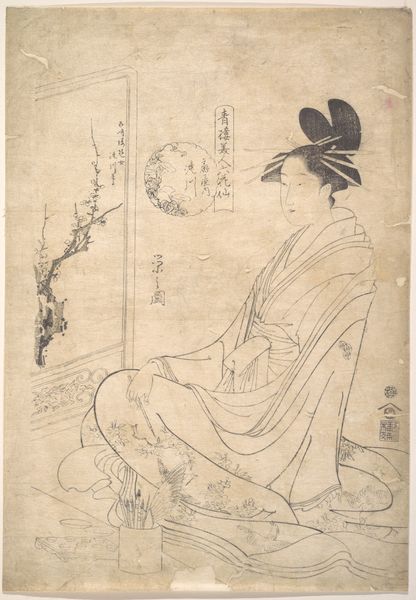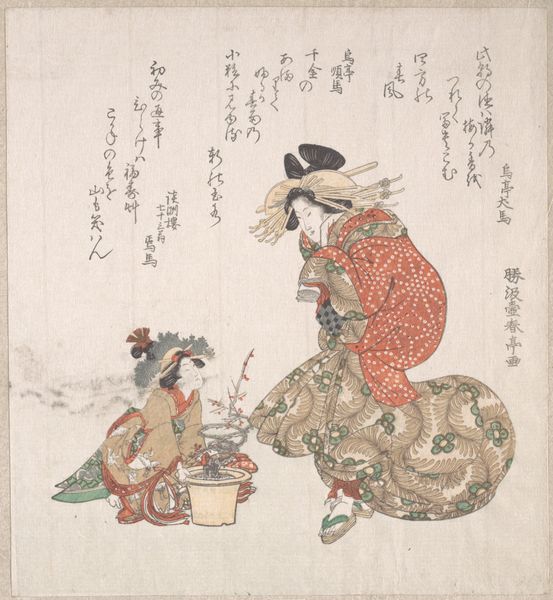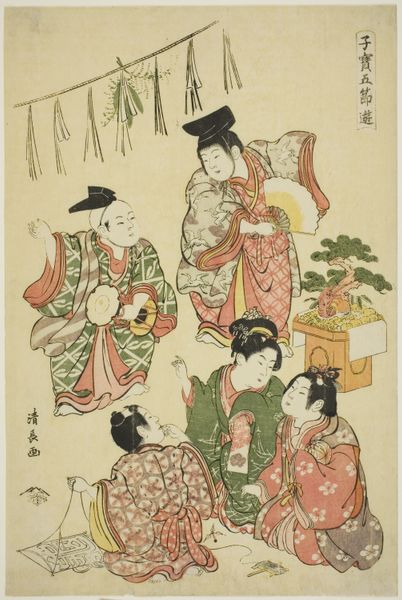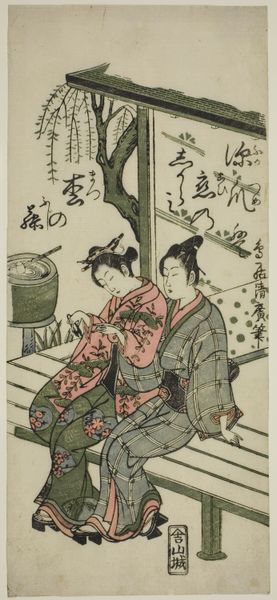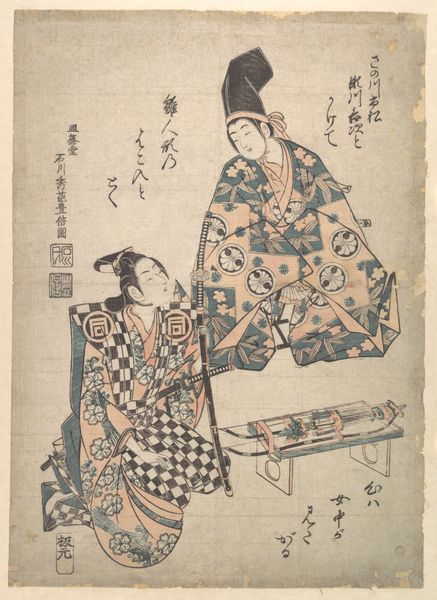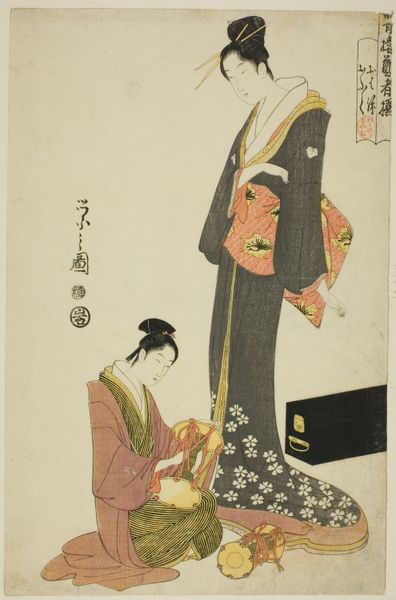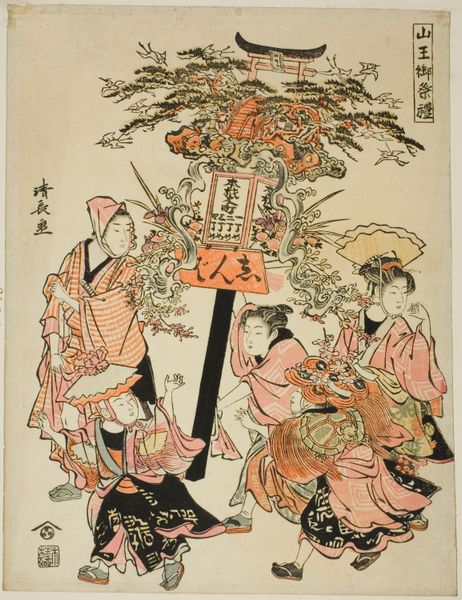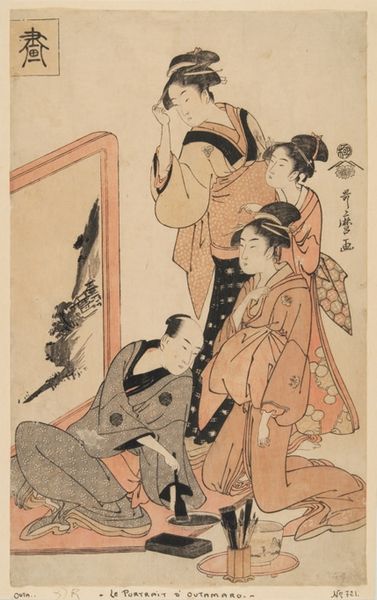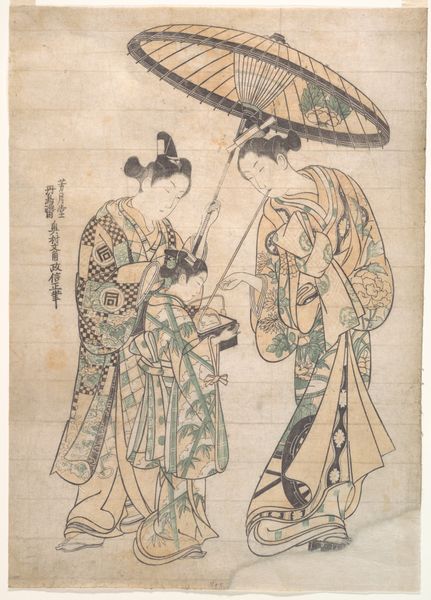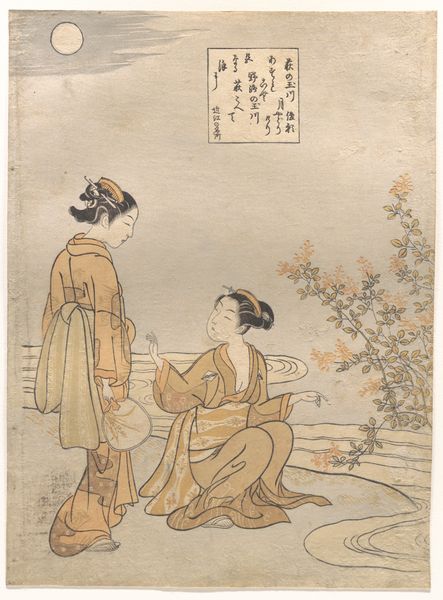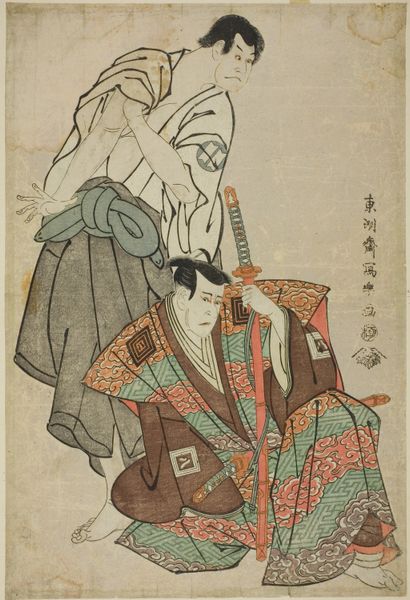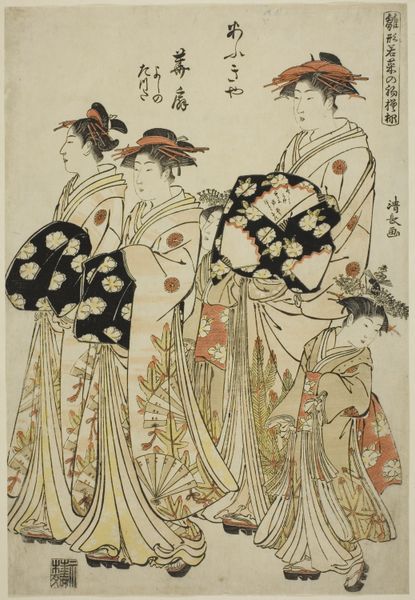
Parody of Palace Attendants Burning Maple Leaves to Heat Sake from "The Tale of Heike" c. 1750
0:00
0:00
print, woodblock-print
# print
#
asian-art
#
ukiyo-e
#
woodblock-print
#
orientalism
#
genre-painting
Dimensions: 41.0 × 30.0 cm
Copyright: Public Domain
Curator: The artwork before us, dating circa 1750, is titled "Parody of Palace Attendants Burning Maple Leaves to Heat Sake from 'The Tale of Heike'," created by Okumura Masanobu. It’s currently held at The Art Institute of Chicago and is a woodblock print. Editor: My first impression is one of intriguing textures. The interplay of delicate lines and intricate patterns across the garments and even the maple leaves is captivating. Curator: Indeed. Note how Masanobu manipulates line to delineate form, while also flattening space in a way that is characteristic of Ukiyo-e prints. The three figures are compressed into a relatively shallow picture plane. How do you think the choice of materials contributes to this effect? Editor: Woodblock printing necessitates a certain simplification, and I imagine it required considerable skill to achieve the details we observe. I’m particularly drawn to the way the artist used visible hatching to create subtle gradations of color and texture. I'm also curious about the labour involved – the process from concept, carving blocks, to the printing of multiples is remarkable. Curator: That's perceptive. Furthermore, this work cleverly references "The Tale of Heike" while also injecting a humorous element. The implied social commentary speaks volumes about the position of art relative to traditional literary tropes. There’s something quite profound in its playful undermining. Editor: It also reminds us of the practical aspects of elite life: here we see attendants not merely in service but creatively repurposing materials to ensure the comforts of their superiors. Consider, too, the labour that would be necessary to collect those leaves, prepare them for burning, and tend the sake throughout. Curator: Precisely. And how the layering of stylized natural elements such as maple leaves and branches not only provides a beautiful backdrop, but also frames the whole composition, bringing attention to its structural balance. Editor: The image feels both familiar and complex; reflecting the inherent tensions between function, craft, and hierarchical social relations that underwrite aesthetic enjoyment. Curator: Reflecting on this Masanobu print through our own specific lenses provides us a fuller appreciation of its intrinsic qualities and enduring value. Editor: It's a privilege to see how traditional practices of labour and materiality influence and contextualize a seemingly simple artwork.
Comments
No comments
Be the first to comment and join the conversation on the ultimate creative platform.
